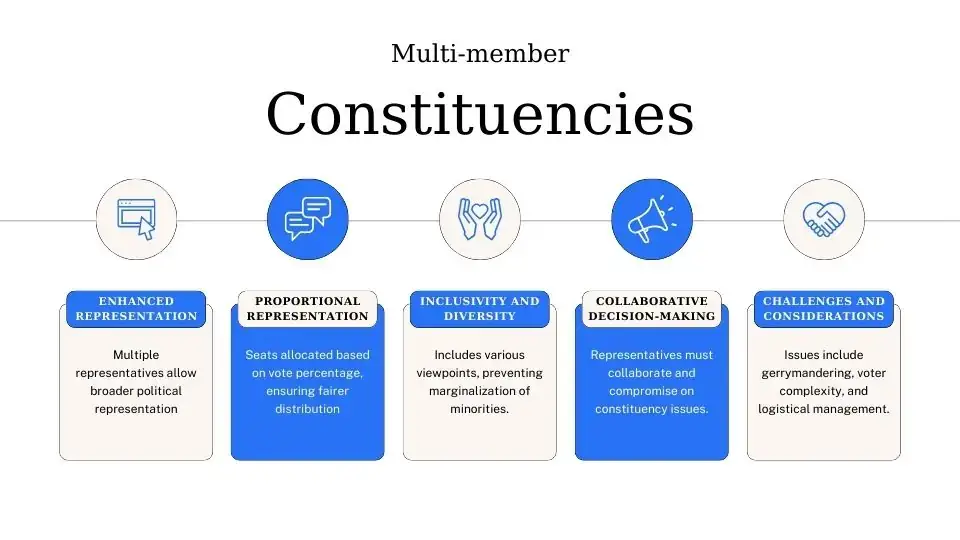Multi-member constituencies offer a distinctive approach to representation, allowing voters the opportunity to elect more than one representative to a legislative body.
In the realm of electoral systems, the structure of constituencies holds significant importance in shaping the representation and inclusivity of democratic processes.
This concept stands as a testament to the evolving dynamics of democratic governance, aiming to ensure a more diverse and nuanced representation of citizens’ voices.

Key Aspects of Multi-member Constituencies
Enhanced Representation
Multi-member constituencies enable voters to elect multiple representatives, providing a platform for a broader spectrum of political ideologies and interests to be represented in legislative bodies.
Proportional Representation
Through proportional representation methods, seats in multi-member constituencies are allocated based on the overall percentage of votes each political party or candidate receives, promoting a fairer distribution of legislative seats.
Inclusivity and Diversity
By accommodating a variety of viewpoints and interests within a single constituency, multi-member systems foster inclusivity and ensure that minority perspectives are not marginalized in the political process.
Collaborative Decision-making
Elected representatives from multi-member constituencies often need to collaborate and compromise to address the concerns of their shared constituency, encouraging cooperation in legislative deliberations.
Challenges and Considerations
Implementation of multi-member constituencies may face challenges such as gerrymandering, complexities in voter understanding of the electoral system, and logistical issues related to managing larger electoral districts, necessitating careful consideration and scrutiny.
Here is the summary of multi-member constituencies in a table format:
This table summarizes the key points regarding multi-member constituencies, outlining their benefits and the challenges they may face.
| Summary Points | Description |
|---|---|
| Enhanced Representation | Voters can elect multiple representatives, leading to a broader spectrum of political ideologies and interests being represented. |
| Proportional Representation | Seats are allocated based on the percentage of votes each party or candidate receives, promoting fairer distribution of legislative seats. |
| Inclusivity and Diversity | By including various viewpoints within a single constituency, multi-member systems ensure minority perspectives are not marginalized. |
| Collaborative Decision-making | Representatives often need to collaborate and compromise to address shared constituency concerns, fostering cooperation in legislative processes. |
| Challenges and Considerations | Issues such as gerrymandering, voter understanding complexities, and logistical management need careful consideration for effective implementation. |
Conclusion
In embracing multi-member constituencies, societies embark on a journey toward a more representative and participatory democracy.
By providing voters with greater choice and ensuring that a broader range of voices are heard in legislative deliberations, multi-member constituencies contribute to the advancement of democratic principles such as equality, justice, and representation for all citizens.
As democratic governance continues to evolve, the role of multi-member constituencies remains pivotal in shaping the democratic landscape and fostering inclusive and responsive governance.



